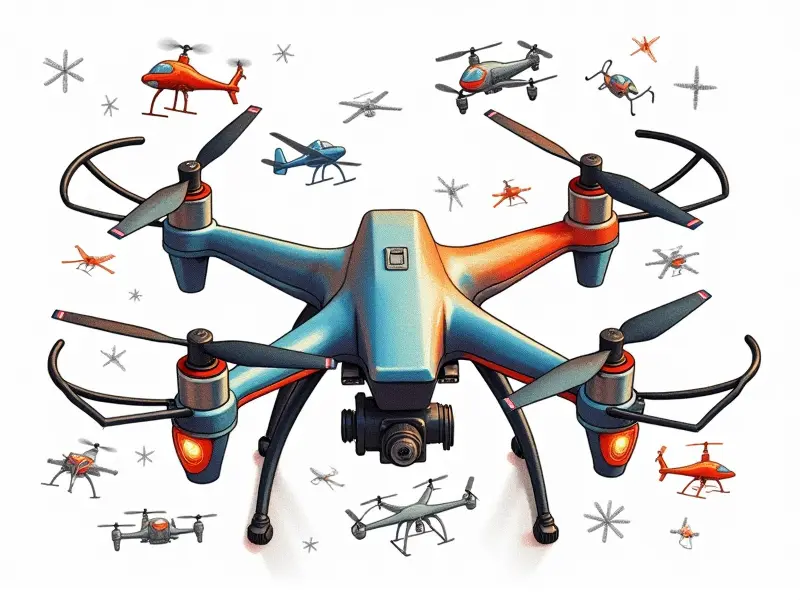How do NiMH batteries work?

NiMH (Nickel-Metal Hydride) batteries are a popular choice for RC (Radio-Controlled) enthusiasts due to their high capacity and reliability. This article delves into the intricacies of how these batteries function, providing valuable insights on maintenance, performance optimization, and common issues faced by users.
NiMH vs LiPo: Which is Best for RC?
Choosing between NiMH and LiPo (Lithium Polymer) batteries depends on your specific needs. While LiPos are lighter and have higher energy density, NiMH batteries offer a robust combination of capacity, durability, and cost-effectiveness. For applications requiring high discharge rates and consistent performance over time, NiMH is often the preferred choice.
Maximizing Flight Time with NiMH Batteries
To get the most out of your NiMH batteries in terms of flight duration, it's crucial to understand their capacity ratings. Higher capacity (mAh) batteries will provide longer operating times but may be heavier. Balancing weight and power is key to maximizing efficiency.
NiMH Battery Basics for RC Pilots
Understanding the basics of NiMH battery technology helps in making informed decisions about your RC setup. Key factors include cell count, voltage per cell (1.2V), and overall capacity. A typical 7-cell NiMH pack provides a nominal voltage of 8.4V.
Understanding Voltage Drop in NiMH Batteries
Voltage drop is an inevitable phenomenon as the battery discharges. It's important to monitor this closely, especially during critical operations like takeoffs and landings. A sudden voltage dip can affect performance and safety.
The Role of NiMH in FPV Racing Drones
FPV (First Person View) racing drones benefit from the consistent power delivery offered by NiMH batteries. These batteries are less prone to thermal runaway issues compared to LiPos, making them safer for high-intensity applications.
NiMH Battery Maintenance Tips for RC Flyers
- Store in a cool, dry place away from direct sunlight.
- Avoid over-discharging; recharge as soon as possible after use.
- Periodically perform full charge cycles to maintain battery health.
Maximizing NiMH Battery Life in RC Models
To prolong the lifespan of your NiMH batteries, adhere to recommended charging practices. Avoid fast-charging unless specified for your specific model and always use a charger designed for NiMH technology.
Common Issues with NiMH Batteries Solved
- Voltage Drop: This is normal but can be mitigated by using higher capacity batteries.
- Battery Swelling: Avoid overcharging and ensure proper ventilation during charging.
- Capacity Loss: Regular maintenance and optimal storage conditions help maintain battery longevity.
Charging Tips for NiMH Batteries in RC
Always use a charger designed specifically for NiMH batteries to ensure safe and efficient charging. Follow the manufacturer's guidelines regarding charge rates and intervals to prevent damage or premature aging of your batteries.
Understanding NiMH Battery Cycles and Lifespan
The lifespan of an NiMH battery is typically measured in terms of charge cycles rather than years. A single cycle equals a full discharge from 100% to 0%, followed by a complete recharge. Expect around 500-1000 cycles before performance degradation becomes noticeable.
The Impact of Temperature on NiMH Performance
NiMH batteries are sensitive to temperature extremes. High temperatures can cause rapid discharge and reduced capacity, while cold conditions may slow down the chemical reactions inside the battery. Maintaining optimal operating temperatures ensures peak performance and longevity.
Conclusion
Making informed choices about NiMH batteries for your RC applications is crucial in achieving both safety and efficiency. By understanding their working principles, maintenance requirements, and environmental impacts, you can significantly enhance the operational life of these essential components. Whether you're a casual hobbyist or an experienced FPV racer, adhering to best practices will ensure that your NiMH batteries perform optimally for years to come.

